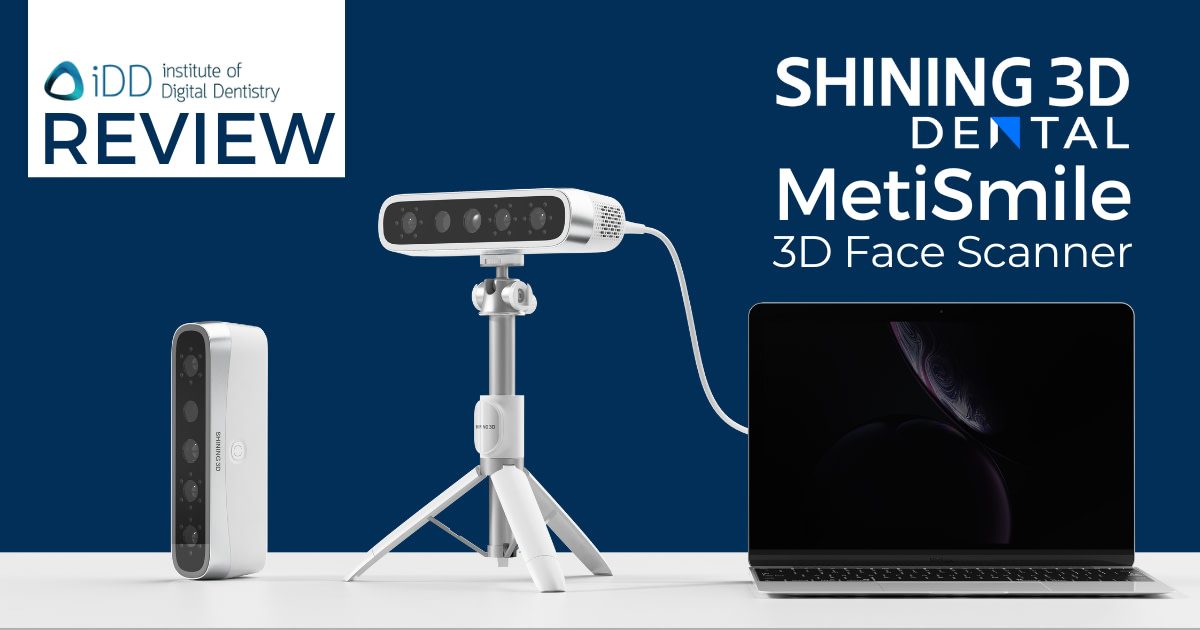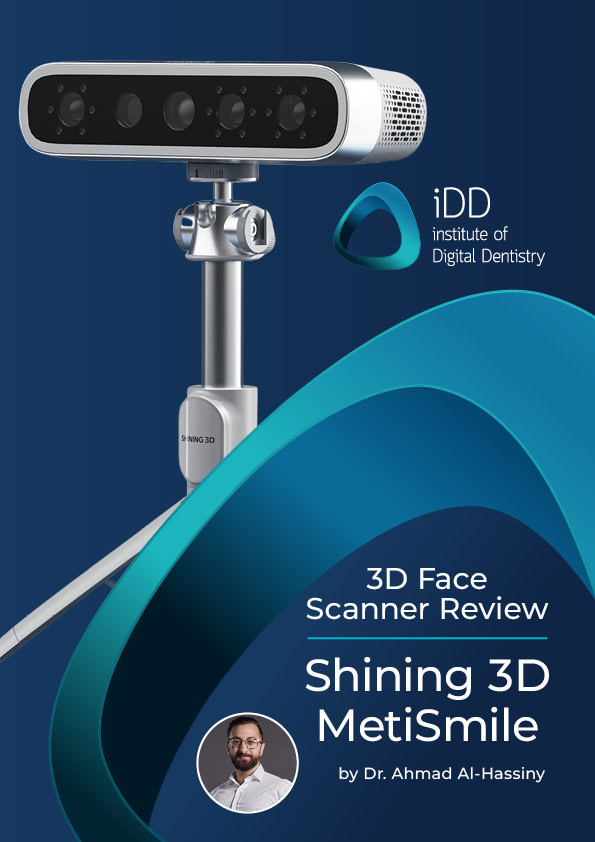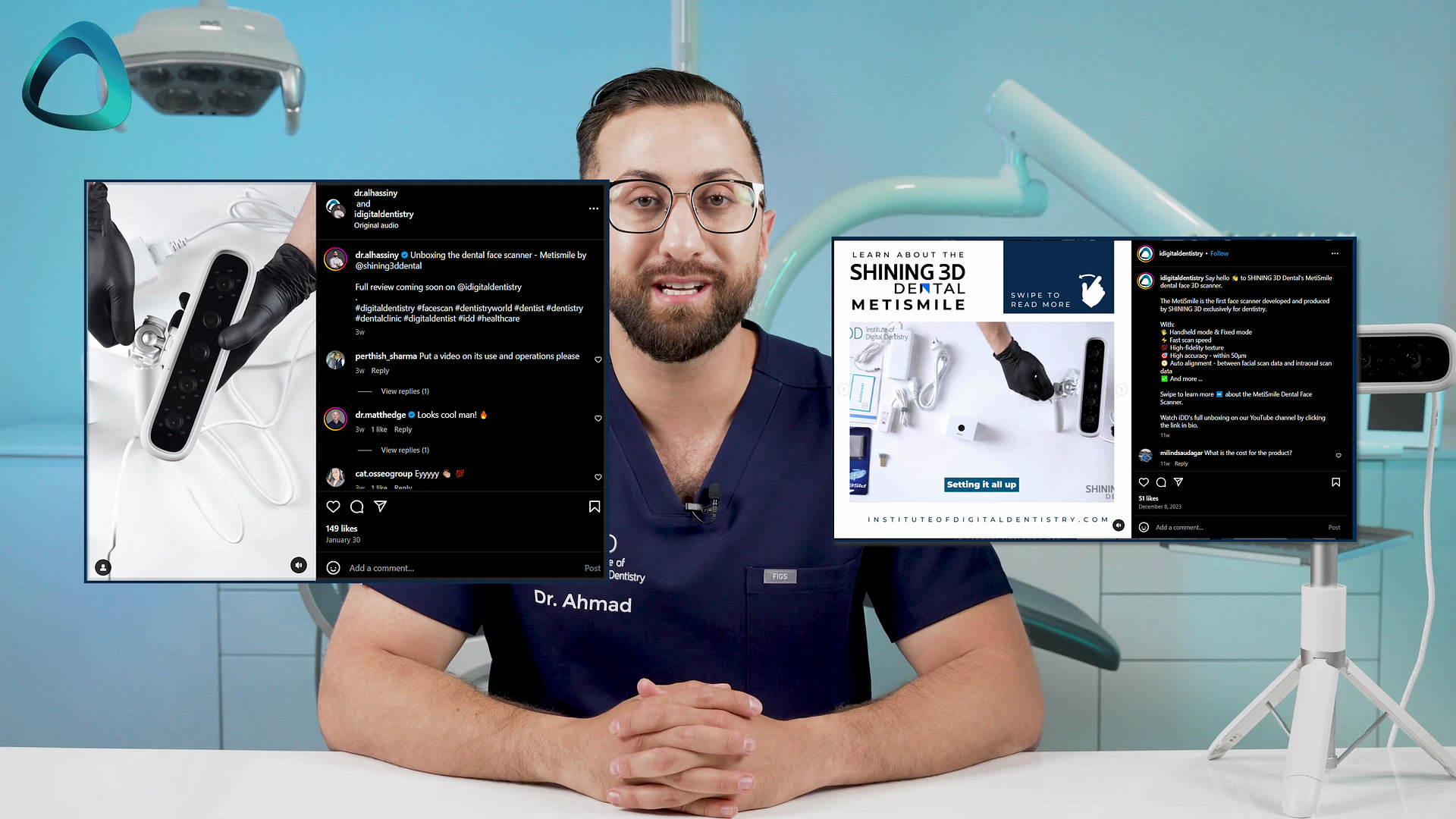In the world of cosmetic dentistry, face scanners are becoming more and more popular for achieving optimal results and patient satisfaction.
Among the many facial scanners on the market, the MetiSmile by SHINING 3D, which was released last year, stands out as one of the more affordable dental-specific face scanning solutions that has the potential to revolutionize the way dentists approach cosmetic cases.
Below is my comprehensive review of the MetiSmile face scanner - exploring its key features, benefits, and potential drawbacks. I have been using this product since its release and compare it to other face scaners I have in the clinic such as the RayFace and iPhone face scanners.
So, whether you're a seasoned cosmetic dentist looking to upgrade your existing setup or a newcomer to the world of digital dentistry, this review will provide you with the insights you need to make an informed decision about incorporating the MetiSmile face scanner into your practice.
Disclaimer - no bias or conflicts of interest! This is an objective review of the MeitSmile. The team at iDD remains unwaveringly committed to providing you with impartial and trustworthy information. SHINING 3D had no part in writing this review or restricting any conclusions iDD makes in our thorough analysis and clinical use of these products.
Watch my full review on YouTube down below or continue reading. Enjoy.
SHINING 3D & MetiSmile
SHINING 3D is a Chinese company that specializes in digital dentistry and 3D printing solutions.
Founded in 2004, the company has become one of the top providers of 3D scanning, 3D printing, and 3D visualization technologies for a wide range of industries, including manufacturing, healthcare, education, and entertainment.
They are most known for their Aoralscan 3 intraoral scanner and also for the AccuFab 3D printers.
Interestingly, they are the only digital dentistry company that currently produces an intraoral scanner, 3D printing solution and face scanner, all within the same brand.
The company is quickly establishing themselves in the facial scanner realm of digital dentistry, competing with the likes of RAYFace - another facial scanner iDD has reviewed. But what exactly is a face scanner?
Well, iDD has covered it quite a bit throughout our social media posts but let’s dive into what a 3D facial scanner is and why you would use one in dentistry.
What is a 3D Facial Scanner and Why Use One in Dentistry?
A facial scanner is a device that captures a highly accurate 3D model of a patient's face, allowing dental professionals to visualize and analyze facial structures, soft tissues, and the relationship between the teeth, jaws, and overall facial composition.
By providing a comprehensive, three-dimensional representation of the patient's face, facial scanners offer a level of detail and precision that traditional 2D photography simply can’t match.
In dentistry, 3D facial scanners play a crucial role in patient care, including cosmetic dentistry, orthodontics, and maxillofacial surgery.
There are several reasons why dental professionals should consider incorporating a facial scanner into their cosmetic dentistry and digital workflow:
- Enhanced treatment planning and patient communication
- Streamline lab communication
- Achieve better clinical outcomes by avoiding angles, lighting, and image distortion issues.
As the technology continues to evolve and become more accessible, it's likely that facial scanning will become an increasingly essential component of modern dental practices.


What are the Key Features of the MetiSmile 3D Dental Face Scanner?
The MetiSmile offers a range of impressive features designed to streamline the facial scanning process.
Some of the key features of the MetiSmile scanner include:
Flashless, eye-friendly scanning technology
Unlike some other handheld face scanners (like the Thunk3D/InstaRisa face scanner) that rely on bright flashes, the MetiSmile scanner uses an infrared-based scanning system.
This means that while you are scanning there are no flashes, no lights, no leds. This makes it much easier for the patient to keep their eyes open during the scanning process and maintain a smile.
With other handheld face scanners I have tried like Thunk3D, I found it impossible to have the patient keep their eyes open for the process as the lights are too bright.
With the MetiSmile, it is easy for the patient to maintain a natural, relaxed expression during the scanning process.
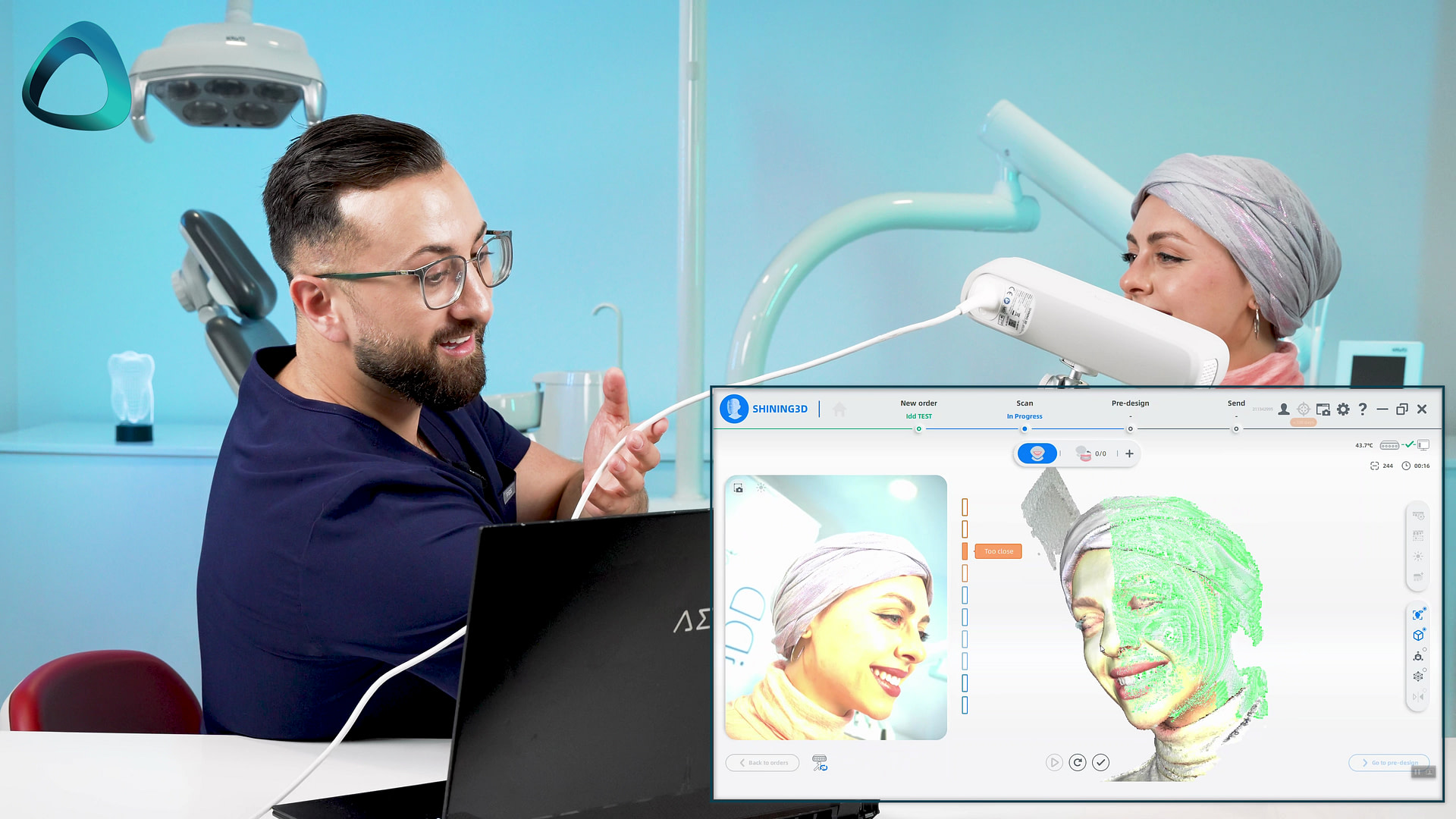
Lightweight and portable.
Weighing in at just 800 grams, the MetiSmile scanner is lightweight and easy to maneuver.
One of the main advantages of heldhand scanners compared to desktop is that you can move them.
If you want a face scanner to be used at mutliple different sites, then a desktop scanner like RayFace is likely not for you.
When using the MetiSmile I found it easy to operate with one hand and it also comes with a tripod that doubles as a monopod. This allows you to either have it sitting on a desk, or use the monopod as a handle while manually scanning a patients face. More on that below.
Dual functionality - handheld and desktop mode
One of the most unique features of the MetiSmile scanner is its ability to function as both a handheld and desktop device.
This is quite a cool innovation and a smart design choice.
- Fold the tripod up into a monopod and use it as a handheld scanner - the scanner can be easily maneuvered around the patient's face to capture data from all angles.
- Open the tripod up and use it as a desktop scanning - the patient moves their head around the device.
Although quite a cool design choice, I will be honest I found myself mainly using the MetiSmile as a handheld scanner rather than a desktop one. The reason being is that it is much faster and predictable for me to control the scanner and move it around the patients head, rather than telling them to move their head around.
In desktop mode it is not a single click operation to take the entire face scan like RayFace, so that is why the patient needs to turn their head around the scanner - much like how the Bellus iPhone app used to be used. Some patients can really struggle with this.
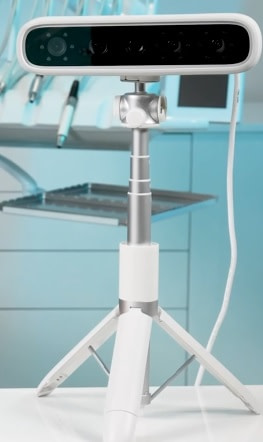

Automatic brightness adjustment
The MetiSmile scanner features a cool software feature that automatically adjusts the device's brightness settings to account for variations in ambient lighting conditions.
This helps ensure that the final 3D model captures the patient's facial texture in good details, without over or under exposure.
I found it worked quite well when used and this is a smart feature to add. Unlike desktop scanners which often have their own lighting systems inbuilt (like ring lights), the handheld MetiSmile needs to be able to adapt to variations in room lighting.

MetiSmile Software and Integration
In addition to its hardware capabilities, the MetiSmile also comes with a powerful software suite that streamlines the scanning process and provides dental professionals with a range of tools for analyzing and manipulating 3D facial data.
The MetiSmile software is called FS Launcher and it serves as the primary interface for patient management and scanning, allowing users to easily input patient information, initiate scans, and review the resulting 3D models.
Anyone familiar with other SHINING 3D products will be right at home. This is a very similar UI to the Aoralscan 3. Note, it is a different software and not run from the same software that runes the IOS.
The MetiSmile software has features that we come to expect from dental specific face scanners, namely, its ability to seamlessly integrate with other scans, such as intraoral scans and CBCT data.
All of this data can be imported at the start of the process and after face scanning the software will attempt an automatic alignment. It does it OK but sometimes you need to manually align them too.
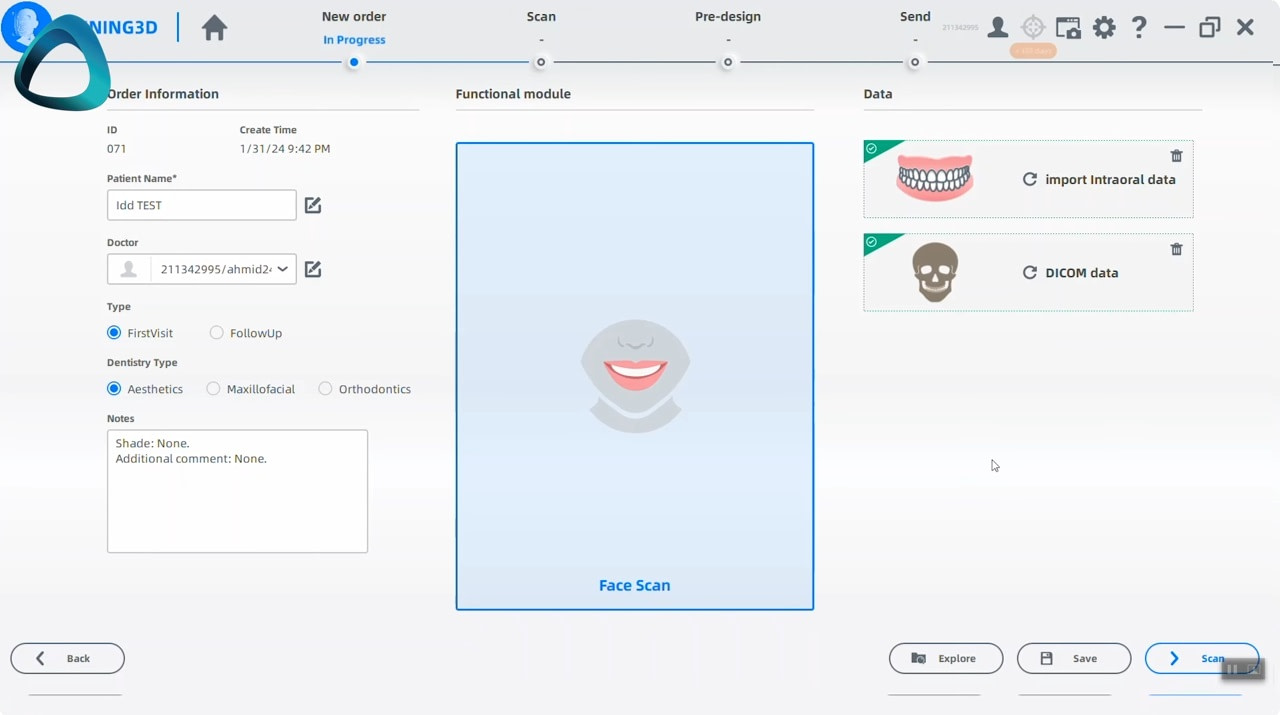
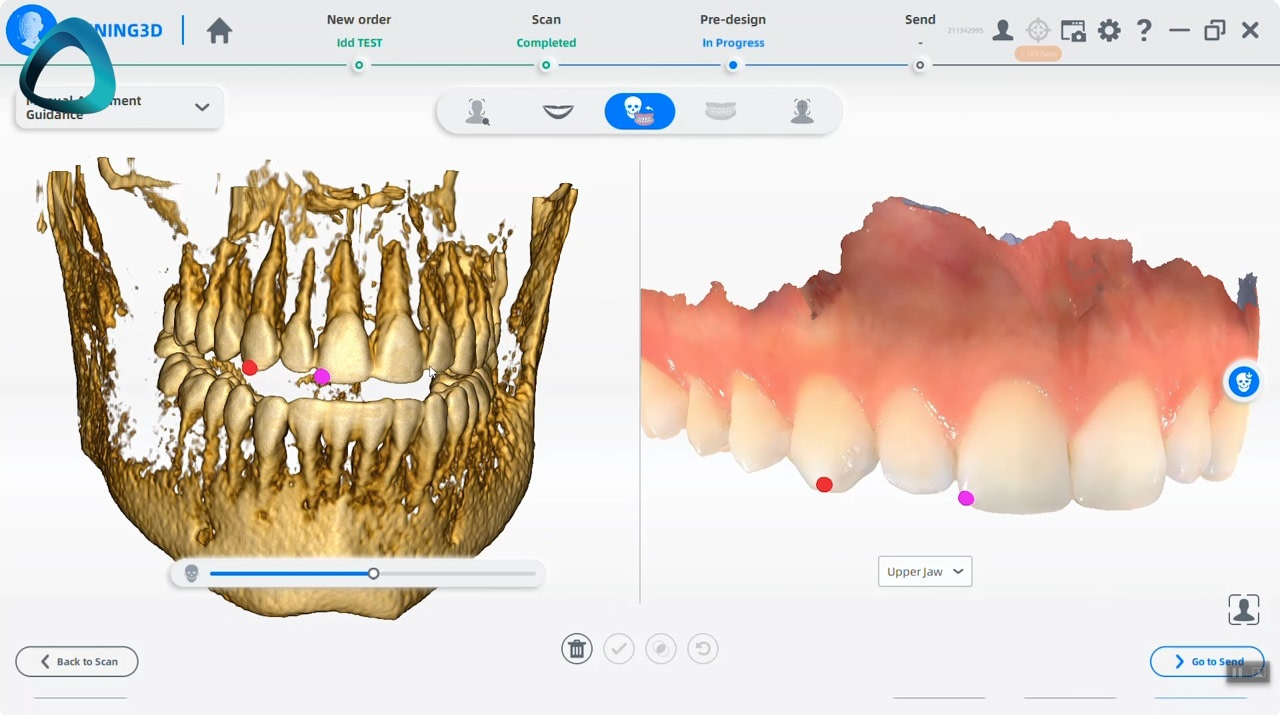
By combining these different data sets, the software can create a comprehensive "virtual patient" that provides a highly detailed, three-dimensional representation of the patient's oral and facial structures. This integration allows dental professionals to understand the relationships between different anatomical structures better and plan certain treatments with greater precision and accuracy. Notably, orthognathic surgery, but this is out of the realm of most general dental practitioners, including myself.
The MetiSmile software also offers a range of exporting options, allowing users to save 3D models in a variety of common file formats, including STL, PLY, and OBJ. This flexibility ensures that the scanner can easily integrate with a wide range of third-party design software and manufacturing processes.
In addition to its core functionality, the MetiSmile software includes several advanced features that enhance its utility in a clinical setting. These include:
Console OS
This powerful simulation tool allows dental professionals to visualize the potential outcomes of orthodontic treatments, helping patients to better understand the expected results and make more informed decisions about their care.
MetronTrack
This facial analysis module enables users to automatically identify and measure key facial landmarks, providing valuable insights into facial symmetry, proportions, and growth patterns. This information can be particularly useful in orthodontic and orthognathic surgery planning.
What are the Pros and Cons of the MetiSmile?
As with any technology, the MetiSmile 3D dental facial scanner has its strengths and limitations.
Below are some of the key advantages and potential drawbacks to help you decide whether it is the right fit for your practice.
Lets start with the positives:
Affordable price point
One of the most significant advantages of the MetiSmile face scanner compared to RayFace is its lower cost. In fact it is one of the most economic dental specific facial scanners on the market.
The MetiSmile currently costs $4,999 USD, which makes it an attractive option for practices looking to incorporate facial scanning technology without making a substantial financial investment.
Here are just a few of the price points of the different dental facial scanners on the market:
- Qlone iPhone app - $29.99 USD
- Revopoint POP 3 (Advanced Edition) - $769 USD
- ObiScanner - $4,400 USD
- MetiSmile - $4,999 USD
- InstaRisa - $19,000 USD ($16,000 without laptop)
- RAYFace - $20,000 USD
Fast scanning process
With a typical scan time of just around 20 seconds, the MetiSmile face scanner is one of the fastest facial scanning devices available.
This speed helps to minimize patient discomfort and movement during the scanning process, leading to higher-quality scans and a more efficient clinical workflow.
Although not as fast as the single-click operation of RayFace, it is much faster than many of the phone-app face scanners.
Comprehensive software suite
This is really what differentiates dental specific face scanners to the other products on the market that may be much cheaper is the software.
Products like RayFace and MetiSmile with a focus for dental come with a powerful and user-friendly software (for free and with no subscription) that includes tools for patient management, scan acquisition, data processing, and treatment simulation.
These tools allows dental professionals to fully leverage the capabilities of 3D facial scanning technology for not only face scannig but treatment planning, patient communication, and improving case acceptance.
Lightweight and portable design
The MetiSmile face scanner's compact and lightweight design makes it easy to transport between operatories or even between different practice locations.
This portability is particularly useful for dental professionals working in multiple offices or frequently traveling to provide care.
So that is the positives.
What are the Cons of the MetiSmile 3D Dental Facial Scanner?
Wired connection
One gripe with this scanner and to be honest it feels like a first world problem, is the amount of cables.
The scanner requires a power connection and a connection to a laptop.
This wired connection can create somewhat of a cluttered workspace and unlike desktop scanners which are usually left in one part of the clinic, always plugged in, always ready, I did find myself feeling a little annoyed that each time I wanted to use the MetiSmile, it involved taking it out of the drwarer and having to spend a few minutes plugging things in and setting it up.
I know. It sounds ridiculous. But compared to an iPhone app which is just ready and can be pulled out of your pocket. It was something I noticed. It may not bother you at all though.
I would love to see a wireless version one day.
Calibiration requirements
To maintain optimal performance and accuracy, the MetiSmile facial scanner requires regular calibration (every 15 days or after significant environmental changes).
This calibration process can be time-consuming and may disrupt the clinical workflow if not planned for in advance and it needs to be done more frequently than other devices we have tested.
The calibration process takes about 5 minutes and is not something you want to do while the patient is waiting as it involves a few different calibration plates.
Not single-click operation
This is another minor gripe.
Compared to single-click operation face scanners, the MetiSmile requires you to physically scan the patients face by moving the device around the patient's face to capture data from all angles.
While this process is still relatively quick and easy, it does require a bit more skill and practice to master compared to fully automated scanning systems. It also can involve scanning errors if not done properly. It also just takes longer.
Basically there is a learning curve with the MetiSmile and it does take some practice sessions to become proficient with the device. For example making sure you are not to close or too far away while scanning and moving it around the patients face. Thankfully the software UI is designed very well to infrom you of this.
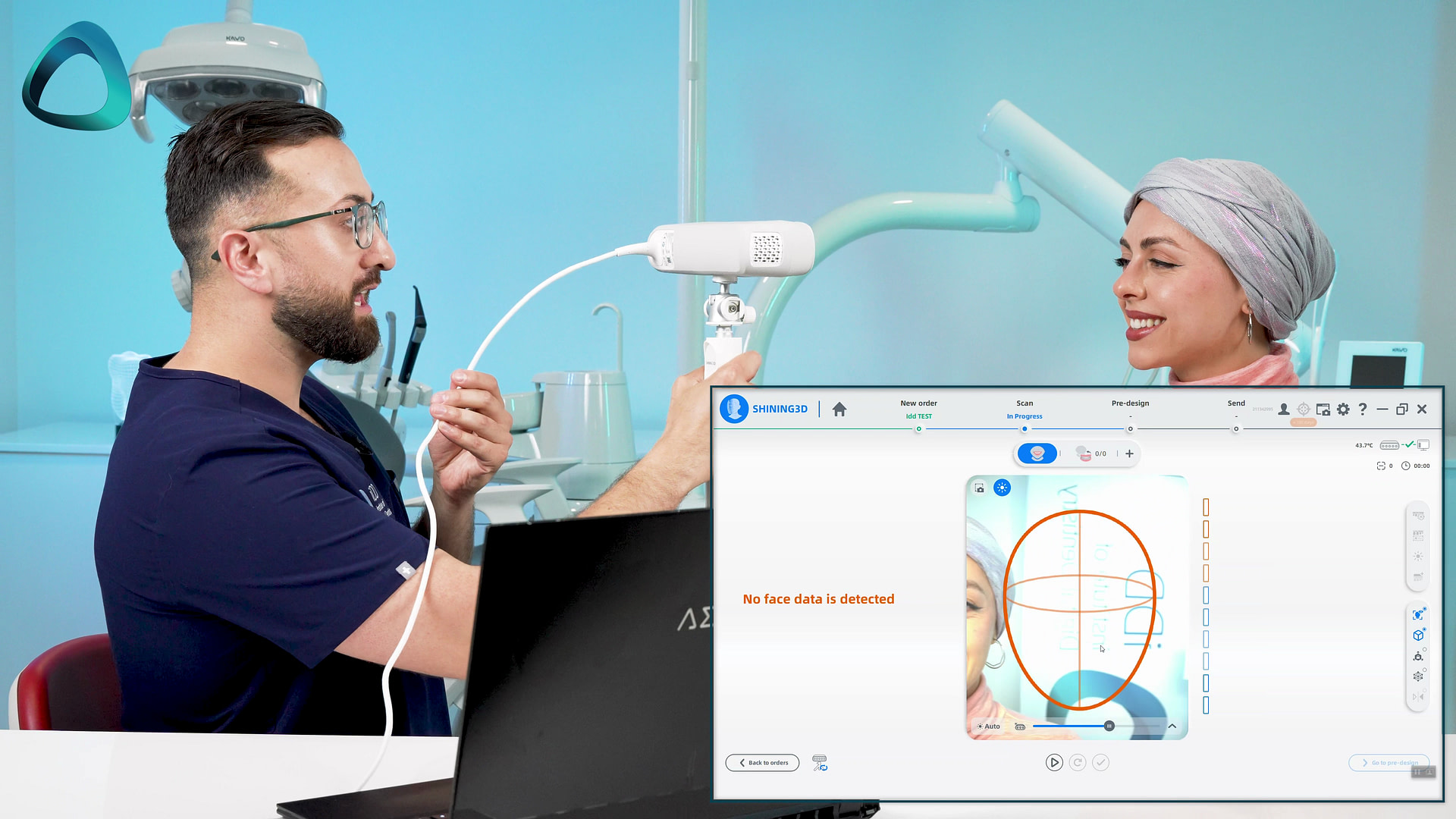
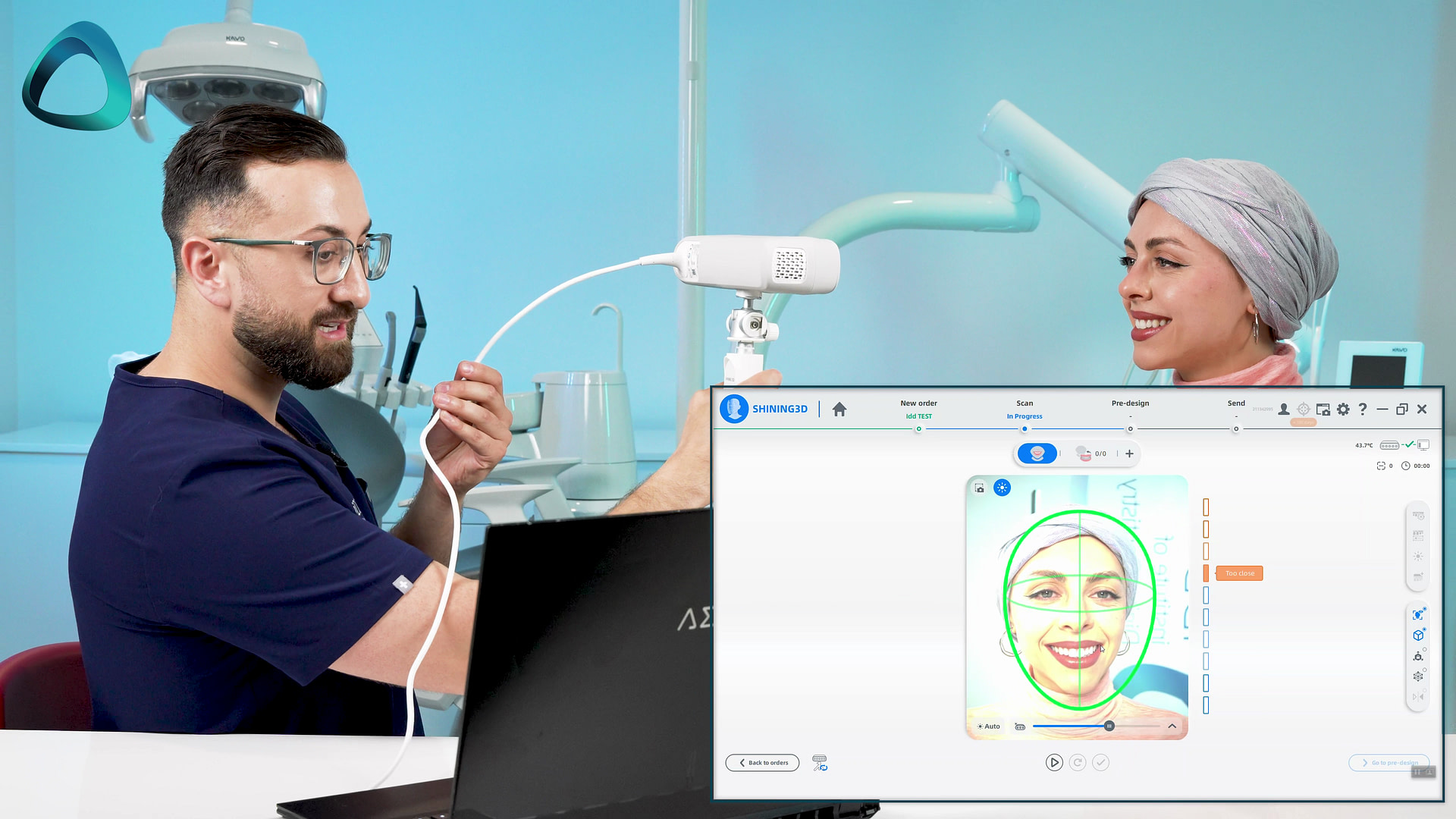
Summary
The MetiSmile facial scanner by SHINING 3D is one of the best dental-specific face scanners on the market right now.
It is a powerful and relatively affordable tool that has the potential to revolutionize the way dental professionals approach cosmetic dentistry. In our practice and across our group of 13 clinicians, we all routinely use face scanning for any cosmetic case, all on x, etc.
With its fast scanning speed, comprehensive software suite, and lightweight, portable design, the MetiSmile face scanner offers a range of impressive features that can help clinicians get into face scanning, streamline their workflow, enhance treatment planning, and improve patient outcomes.
While the MetiSmile scanner does have some limitations, they’re relatively minor compared to strengths. Also factoring in the scanner's affordable price point, this facial scanner seems like it will be an attractive option for dental practices of all sizes, from small solo practices to large, multi-specialty clinics.
As the field of digital dentistry continues to evolve and mature, tools like facial scanners are, I believe, going to be increasingly essential for dental professionals looking to stay at the forefront of their profession.
If you are trying to decide between desktop or handheld. The answer is simple. If you have the budget and want single click operation, get a desktop face scanner. They are easier to use and very efficient. However, if you dont want to spend 20,000, then you need to explore handheld face scanners, and this is one to try for sure.
What is going to be very interesting is with smart phone apps like Qlone entering the market, which are a fraction of the cost (30 USD to be precise), will this completely disrupt these more expensive dental products? Or do they offer enough via their software, integrations, excellent UI and dental focussed software apps to remain relevant. The market will decide.
Thanks for reading.

